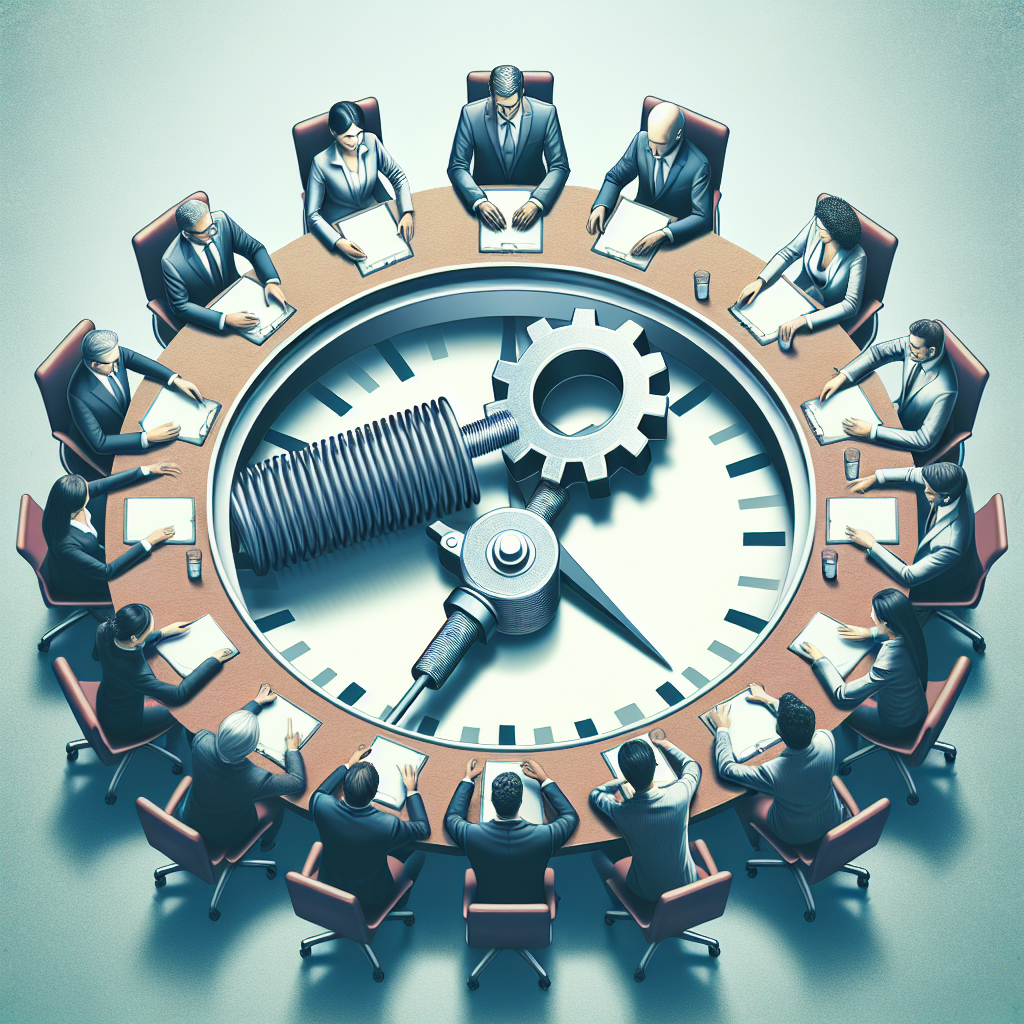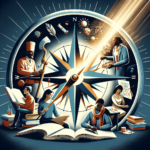Learn effective decision-making strategies to make smart choices under pressure. Find expert tips and techniques.

Decision-making under pressure is a crucial skill that individuals often need to develop, whether in personal experiences or professional environments.
This concept refers to the ability to make choices swiftly and effectively when faced with time constraints or high-stakes situations. The capacity to navigate through complex scenarios while under pressure can significantly impact outcomes, relationships, and overall success in various aspects of life.
The significance of effective decision-making becomes particularly evident in situations where the consequences of choices are heightened. For example, leaders within organizations may encounter crises requiring immediate responses, such as navigating financial downturns or managing team conflicts. In personal contexts, individuals may face pressing decisions regarding health, relationships, or family matters, underscoring the need for a clear and focused mindset.
The ability to make sound decisions while under duress not only fosters self-confidence but also enhances overall effectiveness in navigating life’s challenges. As we delve deeper into this topic, we will explore various strategies and techniques that individuals can employ to improve their decision-making skills when faced with pressure, thus equipping them with essential tools for success in both their personal and professional lives.
Decision-making is a complex process that is influenced by various psychological factors. When faced with high-pressure situations, individuals often rely on cognitive shortcuts known as heuristics, which can lead to cognitive biases. These biases, such as confirmation bias or anchoring, affect the way choices are presented and perceived, ultimately impacting the outcomes of decisions made under duress.
One of the most significant biases is the availability heuristic, where individuals evaluate the likelihood of an event based on how easily examples come to mind. This can skew judgment, especially in crisis situations. For instance, if a person has recently heard about a plane crash, they may overestimate the danger of flying, leading to a hasty choice to avoid air travel. Such distortions, born from psychological influences, showcase the inherent pitfalls in our decision-making systems.
Emotions also play a critical role in decision-making. Stress can trigger heightened emotional responses, which may cloud rational judgment. When individuals are anxious or overwhelmed, they may resort to instinctive reactions, often overlooking essential information. This tendency underscores the importance of being aware of one’s emotional state when making significant decisions. Research in behavioral psychology emphasizes that recognizing one’s emotional triggers can facilitate a more analytical approach, enabling better assessment of situations.
Furthermore, external pressures, including social influences and time constraints, can exacerbate these psychological factors. Recognizing the importance of these elements can empower individuals to adopt more rational strategies in decision-making processes. By understanding cognitive biases and emotional influences, individuals can cultivate mindfulness and critical thinking skills, leading to more informed choices even when under pressure. This awareness is fundamental to navigating the complexities of decision-making effectively.
In the realm of decision-making, understanding when one is operating under high-pressure conditions is crucial for ensuring that decisions are both thoughtful and effective. High-pressure situations often arise in environments characterized by tight deadlines, significant stakes, and intense emotional responses. Recognizing these elements can help individuals better navigate the complexities associated with urgent choices.
One of the primary indicators of a high-pressure scenario is the presence of time constraints. When facing a looming deadline, the urgency can lead individuals to make snap judgments rather than taking the necessary time to parse through information or consider alternatives. This sense of urgency can be exacerbated by external factors, such as the expectations of superiors, the demands of peers, or the consequences of delay, pushing decision-makers to act hastily.
Additionally, emotional intensity often signifies a high-pressure environment. Situations that provoke strong feelings—fear, anxiety, excitement—can cloud judgment and influence the decision-making process. For instance, during a crisis, adrenaline may cause one to act instinctively, potentially overlooking critical details that could lead to more favorable outcomes. The interplay between emotions and decision-making capabilities emphasizes the need for awareness; such environments often result in decisions guided by impulse rather than reason.
Another sign of a high-pressure scenario is the presence of external pressure from stakeholders or team members. When others are looking for quick answers, the resulting atmosphere can heighten anxiety and create a sense of urgency that isn’t always warranted. It is essential to differentiate between well-founded urgency and the kind influenced by external pressures that may precipitate rushed decisions.
By identifying these characteristics—tight deadlines, emotional intensity, and external pressures—individuals can develop strategies to mitigate the risks associated with hasty decision-making while under pressure. Recognizing these signs enables better preparation, fostering a more measured approach to choices that ultimately leads to improved outcomes.
Effective decision-making often hinges on achieving clarity before arriving at a conclusion. One of the foremost strategies involves gathering relevant information meticulously. This step entails collecting data from various sources to develop a well-rounded understanding of the situation. By recognizing the key factors influencing the decision, individuals can identify potential implications and outcomes. It is essential to move beyond surface-level information and scrutinize the underlying causes and possible consequences associated with each option.
Evaluating options logically is another critical component of achieving clarity. This process may include developing a list of possible alternatives and weighing their pros and cons. A well-structured pros and cons list serves as a visual aid, enabling individuals to compare their choices systematically. This approach not only highlights the benefits and drawbacks of each possibility but also promotes a balanced perspective, which is often beneficial when under pressure.
Mindfulness plays a vital role during the decision-making process, especially in high-stress scenarios. By practicing mindfulness techniques, such as deep breathing or brief meditation, individuals can enhance their focus and reduce anxiety. This mental clarity enables better analytical thinking, allowing for more rational assessments of options. Furthermore, it minimizes the influence of emotional biases that often cloud judgment when urgency is a factor.
Lastly, employing decision-making frameworks can significantly enhance clarity. For example, the DECIDE model—Define the problem, Evaluate the options, Consider the implications, Identify values, Decide, and Evaluate—provides a structured approach to making informed choices. By following such frameworks, individuals can navigate their thought processes methodically, leading to a higher likelihood of choosing wisely under pressure.

Decision-making often involves a delicate interplay between analytical reasoning and intuitive gut feelings. While reasoning utilizes logical frameworks and available data, intuition taps into subconscious knowledge acquired through personal experiences. Understanding when to rely on gut instinct can be pivotal, especially in high-pressure situations where time is limited. This section will delve into the balance between these two approaches, emphasizing the importance of recognizing the context in which each may be more beneficial.
Gut instinct, although sometimes dismissed as irrational, can play a crucial role in effective decision-making. Research suggests that our brains process vast amounts of information subconsciously, allowing us to develop feelings about situations based on patterns and previous encounters. When faced with urgent decisions, this subconscious processing can lead to rapid judgments that feel instinctual. Recognizing the basis of these feelings can enhance one’s confidence in their decisions. Reflecting on past experiences, where intuitive choices led to successful outcomes, can serve to reinforce the legitimacy of gut instinct in future dilemmas.
To cultivate sharper intuition, individuals can engage in practical exercises that involve reflection and mindfulness. Journaling decisions and the feelings associated with them can illuminate patterns in one’s intuition. Furthermore, scenario-based simulations allow for practicing intuition in a controlled environment, helping to foster learning from outcomes. Engaging with mindfulness activities, such as meditation or breathing techniques, can also assist in honing one’s ability to listen to internal cues, marrying analytic thought with instinctive feelings.
Ultimately, developing an awareness of when to trust gut instinct versus relying on reason fosters a more rounded approach to decision-making. Understanding this balance is key to navigating complex choices effectively and confidently.
In today’s fast-paced environment, effective decision-making is increasingly recognized as a collaborative process. Engaging others in decision-making not only enhances the quality of choices made but also fosters a sense of ownership and accountability among team members. Collaborative techniques such as brainstorming sessions and systematic feedback discussions can be instrumental under pressure.
Brainstorming is a widely used technique that encourages creative thinking and leverages the diverse skills and backgrounds of participants. By creating a safe space for open dialogue, individuals feel empowered to share innovative ideas without the fear of judgment. This inclusive approach can lead to more comprehensive solutions, especially when time constraints heighten the stakes of the decision. When team members collaboratively explore potential options, the collective intelligence of the group can significantly outweigh that of any single individual, leading to well-rounded decisions.
Seeking feedback is another vital aspect of collaborative decision-making. After generating ideas, it is essential to gather input from team members regarding the feasibility and implications of each option. Feedback can unveil perspectives that may not have been initially considered, helping to identify potential pitfalls early in the process. Additionally, by involving various stakeholders, decision-makers can ensure that the perspectives of different departments or expertise are represented, ultimately fostering a more robust decision-making framework.
The importance of diverse perspectives cannot be overstated. Integrating viewpoints from different backgrounds and experiences enhances problem-solving capabilities and leads to more innovative outcomes. Under pressure, group diversity serves as a buffer against the cognitive biases that may adversely affect an individual’s judgment. By utilizing collaborative decision-making techniques, organizations can navigate challenging situations more effectively, creating solutions that resonate with a wider audience and ultimately driving better results.
In high-pressure scenarios, the ability to evaluate risks and consequences becomes paramount. Effective decision-making necessitates a thorough understanding of potential outcomes, as every choice carries inherent risks that can impact both individuals and organizations significantly. Thus, engaging in systematic risk assessment is critical when navigating through these challenging situations.
A popular technique for risk evaluation involves the use of risk matrices. This visual tool assists decision-makers in categorizing risks based on their likelihood and potential impact. By plotting risks on a matrix, it becomes easier to identify which risks demand immediate attention and which can be monitored over time. Furthermore, this approach assists in prioritizing decisions according to the severity and probability of adverse outcomes.
Another essential aspect of evaluating risks is the consideration of both short-term and long-term consequences. Some decisions may yield immediate benefits but pose long-term challenges. Conversely, certain choices may appear unfavorable initially yet lead to more significant advantages over time. Therefore, it is critical to adopt a holistic perspective when weighing these factors. A practical method to achieve this is by conducting a cost-benefit analysis that thoroughly explores the various ramifications of each option.
Moreover, consulting with colleagues or stakeholders can provide valuable insights that one might overlook when under pressure. Engaging in collaborative discussions helps in gathering diverse viewpoints that enrich the risk assessment process. Additionally, utilizing decision trees or scenario planning can facilitate a deeper understanding of potential pathways and their respective outcomes.
In conclusion, effective decision-making in high-pressure situations hinges on a meticulous evaluation of risks and consequences. By employing tools such as risk matrices and considering the broader implications of choices, decision-makers can enhance their ability to navigate uncertainty and make informed, strategic decisions. This approach not only leads to better outcomes but also fosters a culture of thoughtful deliberation in decision-making processes.

Reflective practices play a crucial role in enhancing decision-making abilities. To improve future choices, individuals should actively engage in a post-decision analysis that examines the outcomes of past decisions. One effective technique is keeping a decision journal. This tool allows decision-makers to document the rationale behind their choices, the anticipated outcomes, and the actual results. By reviewing these entries over time, individuals can gain insights into their decision-making patterns and identify areas for improvement.
Furthermore, a decision journal serves as a valuable repository for tracking both successful and poor decisions. When analyzing successful outcomes, it is important to dissect the contributing factors that led to this success. Understanding the key elements that made those decisions effective can reinforce positive habits and strategies in future scenarios. Conversely, when reviewing poor decisions, it is equally vital to approach the analysis without bias. By recognizing the missteps and errors in judgment, individuals can learn to avoid similar pitfalls in the future. This critical reflection transforms negative experiences into valuable lessons.
Another technique to enhance reflective practice is conducting regular feedback sessions. Engaging with peers or mentors can provide diverse perspectives that help clarify thoughts and reveal blind spots in one’s decision-making process. Additionally, utilizing tools like SWOT analysis (assessing strengths, weaknesses, opportunities, and threats) can help individuals evaluate their past decisions systematically, allowing for the identification of both strengths to enhance and weaknesses to address.
In conclusion, learning from past decisions through reflective practices like decision journals and feedback mechanisms creates a pathway for improved decision-making. By systematically analyzing past choices, individuals can cultivate a deeper understanding of their decision-making processes, ultimately leading to better outcomes in the face of future pressures.
In today’s fast-paced world, the ability to make sound decisions under pressure is paramount. Throughout this blog post, we have explored several essential strategies designed to enhance decision-making skills. Each strategy emphasizes the value of clarity, mindfulness, and adaptability, crucial for navigating the complexities of modern life.
First, we discussed the importance of gathering comprehensive information before making choices. This involves evaluating available data and assessing potential outcomes. By prioritizing thorough research, individuals can better understand the implications of their decisions, which allows for informed choices even in high-stress situations.
Next, we highlighted the effectiveness of maintaining composure during decision-making. Managing emotions plays a significant role in ensuring rational thinking. Techniques such as deep breathing or taking a brief pause can greatly aid in maintaining clarity and focus, ultimately leading to more effective decision outcomes.
Additionally, we examined the role of collaboration and consultation. Engaging with trusted peers can provide diverse perspectives, thereby enriching the decision-making process. Embracing feedback from others can lead to more balanced choices and foster a sense of community and support.
Lastly, embracing flexibility was underscored as a critical component of effective decision-making. Recognizing that decisions may need to be adjusted in light of new information or changing circumstances can prevent stagnation and promote continual growth.
Incorporating these strategies into daily life can help individuals navigate difficult choices more effectively and build confidence in their decision-making abilities. By actively reflecting on past decisions, one can strive for continual improvement and embrace a more thoughtful approach to decision-making moving forward.
Looking to advertise, promote your brand, or explore partnership opportunities?
Reach out to us at
[email protected]









Chose where you want to study, and we will let you know with more updates.